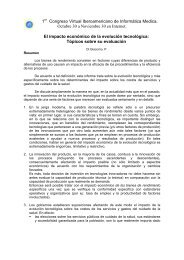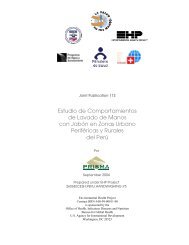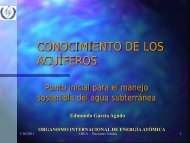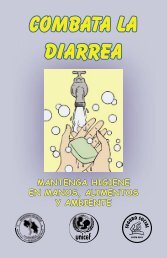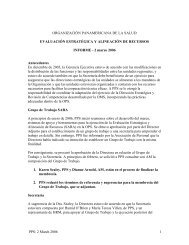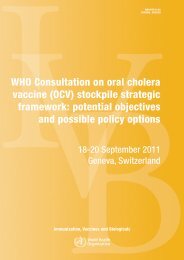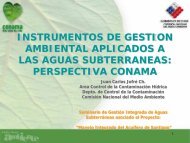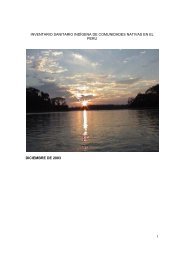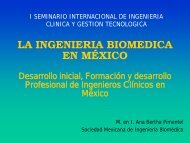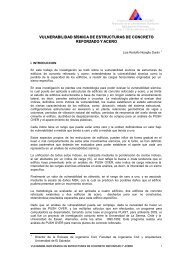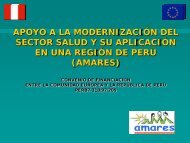a database of the National Library of M
a database of the National Library of M
a database of the National Library of M
You also want an ePaper? Increase the reach of your titles
YUMPU automatically turns print PDFs into web optimized ePapers that Google loves.
0.5 days at a depth <strong>of</strong> 10 cm(6). Vinyl chloride was approximately 50% and100% degraded in 4 and 11 weeks, respectively, in <strong>the</strong> presence <strong>of</strong> sand bymethanogenic microorganisms under anaerobic conditions in laboratory scaleexperiments(7). In <strong>the</strong> absence <strong>of</strong> sand 20% and 55% degradation occurred in4 and 11 weeks, respectively(7). [(1) Swann RL et al; Res Rev 85: 17-28(1983) (2) Riddick JA et al; Organic Solvents: Physical Properties andMethods <strong>of</strong> Purification. Tech <strong>of</strong> Chem. 4th ed. Wiley-Interscience pp. 1325(1986) (3) Lyman WJ et al; Handbook <strong>of</strong> Chemical Property EstimationMethods. Washington, DC: Amer Chem Soc pp. 4-9, 15-1 to 15-29 (1990) (4)Gossett JM; Environ Sci Technol 21: 202-206 (1987) (5) Daubert TE, DannerRP; Physical and Thermodynamic Properties <strong>of</strong> Pure Chemicals DataCompilation Washington, DC: Taylor and Francis (1989) (6) Jury WA et al; JEnviron Qual 13: 573-79 (1984) (7) Brauch HJ et al; Vom Wasser 68: 23-32(1987)]**PEER REVIEWED**AQUATIC FATE: Based on a classification scheme(1), an estimated Koc value<strong>of</strong> 57(SRC), calculated from a water solubility <strong>of</strong> 2,700 mg/l(2) and aregression derived equation(3) indicates that vinyl chloride is notexpected to adsorb to suspended solids and sediment in water(SRC).Volatilization from water surfaces is expected to occur rapidly(3) basedupon a Henry's Law constant <strong>of</strong> 0.0278 atm-cu m/mole(4). Using this Henry'sLaw constant and an estimation method(3), volatilization half-lives for amodel river and model lake are 1 hour and 3 days, respectively(SRC).According to a classification scheme(5), a BCF value <strong>of</strong> less than 10measured in fish(6), suggests bioconcentration in aquatic organisms islow(SRC). The biodegradation half-life <strong>of</strong> vinyl chloride in aerobic andanaerobic waters was reported as 28 and 110 days, respectively(7).Hydrolysis is not expected to be an important environmental fate processbased on hydrolysis half-lives <strong>of</strong> 9.91 years (pH = 7, 25 deg C) and 10.7years (pH = 7, 10 deg C)(8). Vinyl chloride may undergo indirectphotolysis in natural waters when photosensitizers such as humic materialare available(9). [(1) Swann RL et al; Res Rev 85: 17-28 (1983) (2)Riddick JA et al; Organic Solvents: Physical Properties and Methods <strong>of</strong>Purification. Tech <strong>of</strong> Chem. 4th ed. Wiley-Interscience pp. 1325 (1986) (3)Lyman WJ et al; Handbook <strong>of</strong> Chemical Property Estimation Methods.Washington, DC: Amer Chem Soc pp. 4-5, 15-1 to 15-29 (1990) (4) GossettJM; Environ Sci Technol 21: 202-206 (1987) (5) Franke C et al; Chemosphere29: 1501-14 (1994) (6) Freitag D et al; Chemosphere 14: 1589-1616 (1985)(7) Capel PD, Larson SJ; Chemosphere 30: 1097-1106 (1995) (8) Rathbun RE;US Geol Surv Pr<strong>of</strong> Pap 1589: 1-151 (1998) (9) Mill T; Chemosphere 38:1379-90 (1999)]**PEER REVIEWED**ATMOSPHERIC FATE: According to a model <strong>of</strong> gas/particle partitioning <strong>of</strong>semivolatile organic compounds in <strong>the</strong> atmosphere(1), vinyl chloride, whichhas a vapor pressure <strong>of</strong> 2,980 mm Hg at 25 deg C(2), is expected to existsolely as a gas in <strong>the</strong> ambient atmosphere. Gas-phase vinyl chloride isdegraded in <strong>the</strong> atmosphere by reaction with photochemically-producedhydroxyl radicals(SRC); <strong>the</strong> half-life for this reaction in air isestimated to be 55 hours(SRC), calculated from its rate constant <strong>of</strong>6.96X10-12 cu cm/molecule-sec at 25 deg C(3). Vinyl chloride is notexpected to undergo considerable direct photolysis since this compounddoes not absorb light appreciably in <strong>the</strong> environmental UV spectrum(SRC).[(1) Bidleman TF; Environ Sci Technol 22: 361-367 (1988) (2) Daubert TE,Danner RP; Physical and Thermodynamic Properties <strong>of</strong> Pure Chemicals DataCompilation Washington, DC: Taylor and Francis (1989) (3) Atkinson R; J.Phys Chem Ref Data Monograph 1 (1989) (4) Crutzen PJ et al; J Geophys Res83: 345-63 (1978) (5) Dilling WL et al; Environ Sci Technol 9: 833-88



